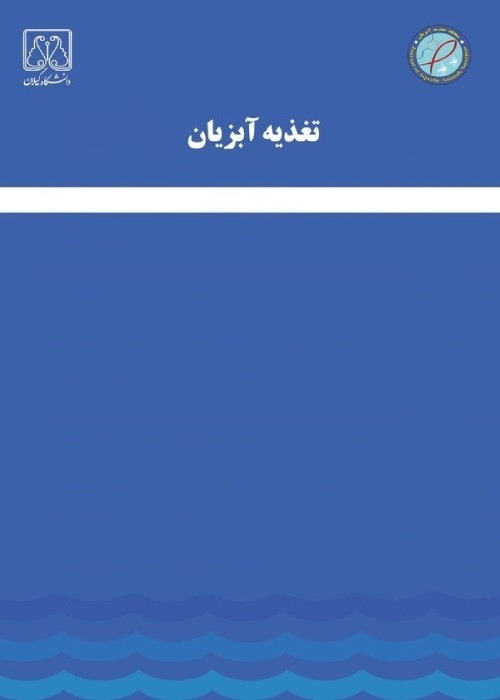Effects of dietary selenium nanoparticles, selenomethionine and sodium selenite on growth performance, levels of thyroid hormones and antioxidant status of rainbow trout, Oncorhynchus mykiss
Author(s):
Article Type:
Research/Original Article (دارای رتبه معتبر)
Abstract:
Introduction
Dietary Selenium (Se) is vital for the growth and immune system of fish. The most important action of Se biological functions comes from several specific selenoproteins, some of which are involved in thyroid hormone metabolism, while others play an antioxidant defence role. Se as a nutritional element is obtained in the aquatic environment from two main sources: feed and fertilizer. Fish species absorb dietary Se in various forms, such as organic and inorganic. It should be used in the correct dosage and anything above this can have negative consequences. As for Se in the diet of fish, there are a few different forms commonly used as inorganic, such as Na2SeO3 or sodium selenite. Organic forms of dietary Se also include selenomethionine (SeMet) and selenocysteine (SeCyst). This study was performed to evaluate the effect of different sources of Se on growth performance, activity of antioxidant enzymes and thyroid hormones in rainbow trout.Materials and methods
Organic Se (Se methionine), mineral Se (sodium selenite) and nanoselenium were added to the basal diet at a rate of 0.3 mg/kg. Basal food without Se compounds was used as a control treatment. Fish with an average weight of 29.25 ± 1.70 g were fed with experimental diets for 8 weeks. The fish were fed twice a day (at 9:00 AM and 2:00 PM) at the rate of 4% of their biomass.Results and discussion
The results showed that selenium nanoparticles had no significant effect on growth indices compared to organic and inorganic forms (p<0.05). The activities of superoxide dismutase and catalase enzymes in treatments containing different forms of Se was significantly higher than in the control (p<0.05). The level of malondialdehyde in the liver of fish fed the diet containing sodium selenite was significantly lower than the other experimental treatments (p<0.05). The amount of triiodothyronine in treatments containing selenomethionine and Se nanoparticles was significantly higher than in the control group (p<0.05), which may be due to the stimulation of thyroid stimulating hormone. Thyroxine was not significantly different in fish fed with different forms of Se and in control (p>0.05).Conclusions
In general, using organic, mineral and nanoselenium sources with a concentration of 0.3 mg/kg of diet has strengthened the antioxidant status of rainbow trout fry, and also through the metabolism of triiodothyronine, it has improved the function of the thyroid gland.Keywords:
Language:
Persian
Published:
Journal of Aquatic Animals Nutrition, Volume:9 Issue: 3, 2024
Pages:
65 to 80
https://magiran.com/p2695881
دانلود و مطالعه متن این مقاله با یکی از روشهای زیر امکان پذیر است:
اشتراک شخصی
با عضویت و پرداخت آنلاین حق اشتراک یکساله به مبلغ 1,390,000ريال میتوانید 70 عنوان مطلب دانلود کنید!
اشتراک سازمانی
به کتابخانه دانشگاه یا محل کار خود پیشنهاد کنید تا اشتراک سازمانی این پایگاه را برای دسترسی نامحدود همه کاربران به متن مطالب تهیه نمایند!
توجه!
- حق عضویت دریافتی صرف حمایت از نشریات عضو و نگهداری، تکمیل و توسعه مگیران میشود.
- پرداخت حق اشتراک و دانلود مقالات اجازه بازنشر آن در سایر رسانههای چاپی و دیجیتال را به کاربر نمیدهد.
In order to view content subscription is required
Personal subscription
Subscribe magiran.com for 70 € euros via PayPal and download 70 articles during a year.
Organization subscription
Please contact us to subscribe your university or library for unlimited access!


